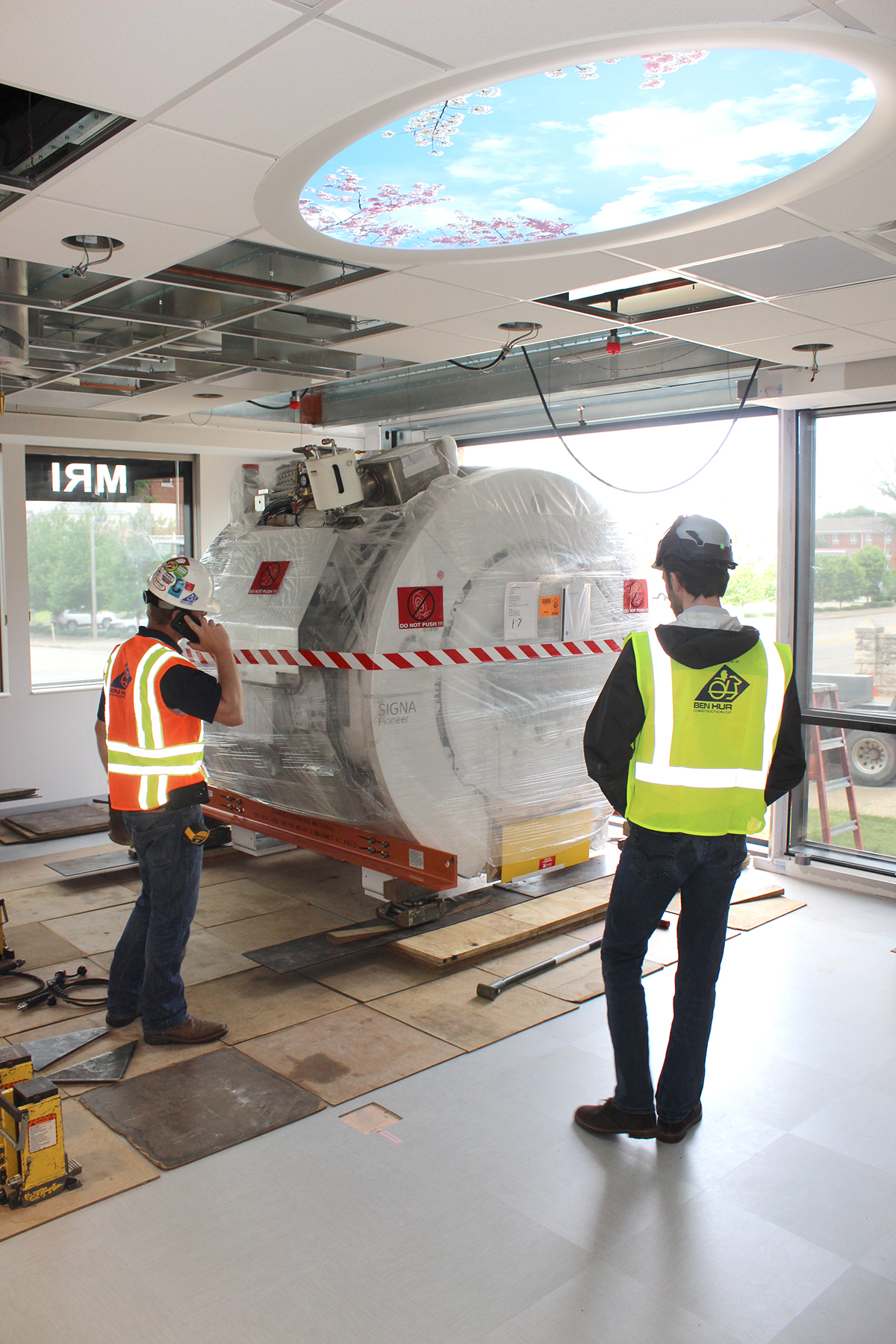Area residents in need of magnetic resonance imaging (MRI) and their healthcare providers will soon have a new option for this body scanning technology that diagnoses illness and injury. Blessing Health has received a new 3T MRI. The 16,500-pound unit was moved into its new home in the Blessing Health Center 927 Broadway, Quincy, by crane on Tuesday, May 16. The new technology is twice as strong as the MRIs currently used, offering benefits to patients and their providers.

MRI uses magnets and radio waves instead of radiation to create images of structures inside the body including the brain, spine, soft tissue of joints, musculoskeletal and small bones, and the vascular system.
The 3T MRI technology being installed at Blessing Health offers the following benefits:
- Speed: The “T” in the name stands for Tesla, a unit of measurement used to denote the strength of the magnetic field used to capture the image. With a magnetic field strength that is twice as powerful as conventional 1.5T MRI systems, 3T MRI provides extremely clear and vivid images during a shorter scanning time for patients.
Using 3T MRI imaging, Blessing will be able to capture images of smaller organs like the prostate, that were unable to be imaged as clearly previously.
“Prostate cancer is among the top five cancers diagnosed and treated at Blessing Health,” said David Lieber, MD, board certified urologist, Blessing Health. “Having this convenient access to 3T MRI technology is going to give the Blessing urology team the information needed to develop the patient’s treatment plan and implement that plan as quickly as possible.”
The addition of the 3T MRI brings the number of MRIs available within the Blessing Health system to five, enhancing patient and provider access to care. The other four units are 1.5T technology.
“Not all MRI examinations require 3T technology,” said Christopher Solaro, MD, PhD, CPE, Chief Medical Officer, Blessing Health. “In many situations, a 1.5T MRI scan is preferred. Having both 1.5 and 3T options available allows patients to undergo the type of testing their provider needs to make a diagnosis without having to leave the community.”
- Patient comfort and experience:
- Blessing is installing a “wide bore” 3T MRI. That means the opening through which a patient passes during the imaging process is larger, and patients can be scanned in the feet-first position rather than head-first only. Both the size of the opening and patient positioning can help reduce anxiety during an MRI scan.
- The coils required to be placed on a patient’s body, that emit the signal to the MRI to produce the image, are a new technology called “Air Coils.” They are inside a blanket that lies across the patient, rather than being attached to the patient’s body. Air coil technology increases comfort and helps deliver a better image.
- The table on which patients lie during imaging sits lower to the ground, making it easier for patients to get on and off.
- The room housing the MRI will feature floor-to-ceiling windows for patient comfort, and its design will feature the latest advances in MRI safety.
“Any person who has had an MRI and felt some anxiety will know how important these comfort measures are to an exceptional patient experience,” said Britni Skirvin, MBA, administrative director, Ancillary Services, Blessing Health. “The patient comfort and experience available with this system make up the fourth pillar of its importance to care in the region, coupled with the speed of scanning, the new images it can capture and the quality of those images.”
- Energy efficiency: Blessing’s 3T MRI is designed to use approximately 50% less power than conventional designs.
Installing and testing of the new Blessing Health 3T MRI is expected to be complete in July and the system ready for patient use.

